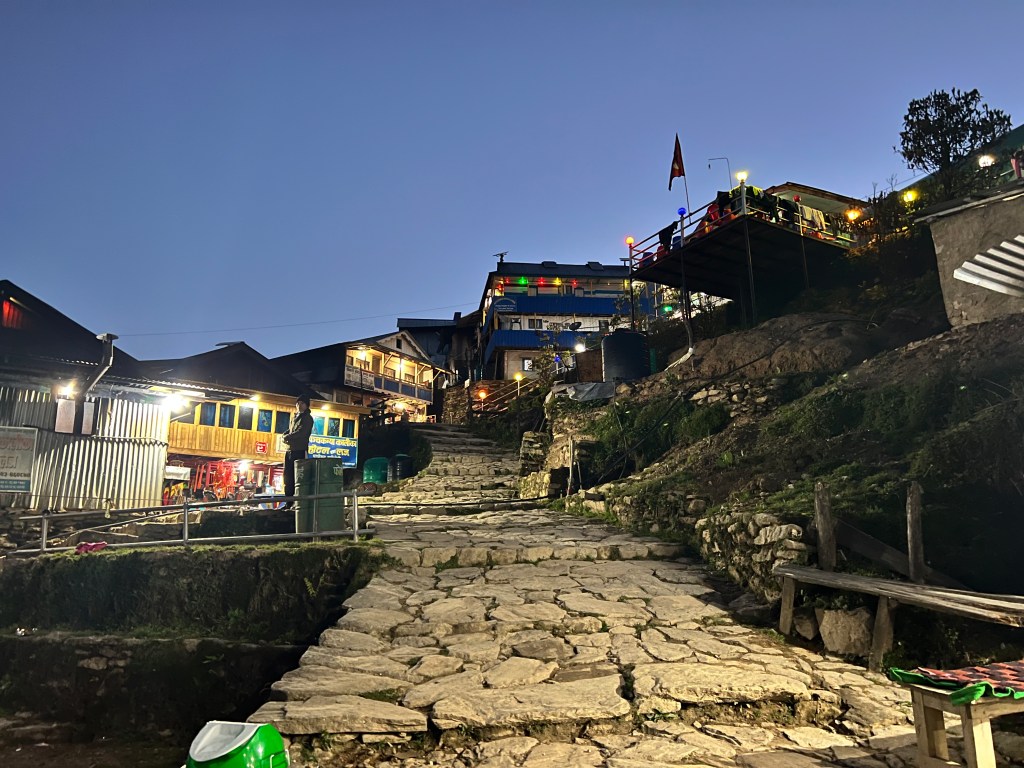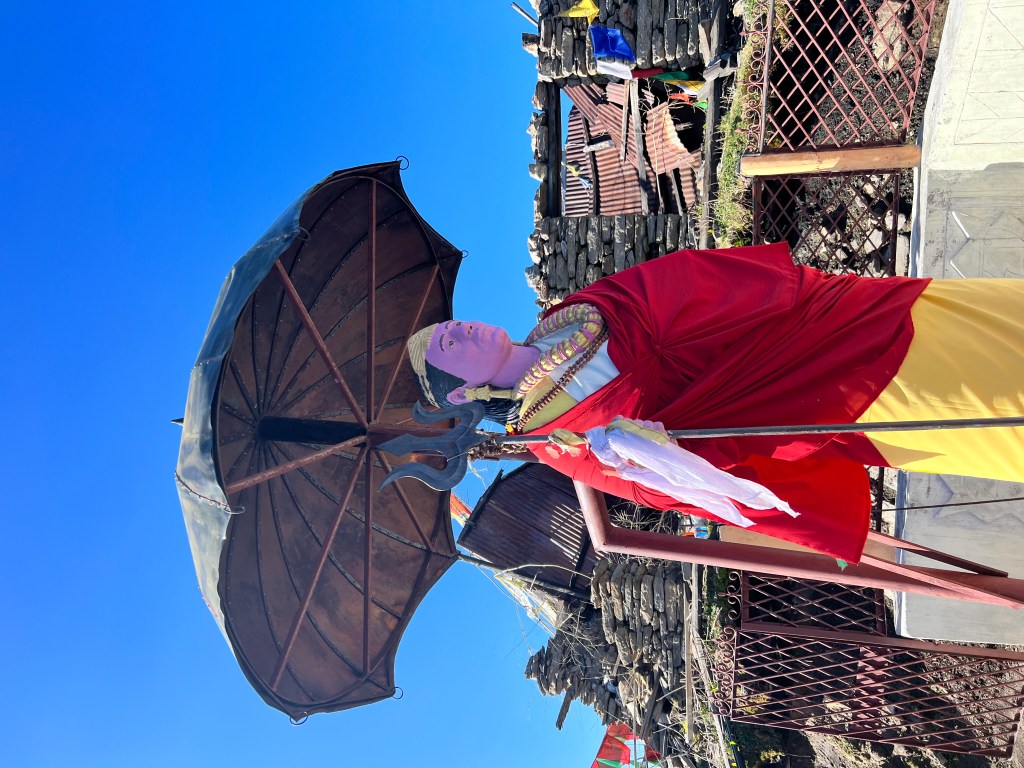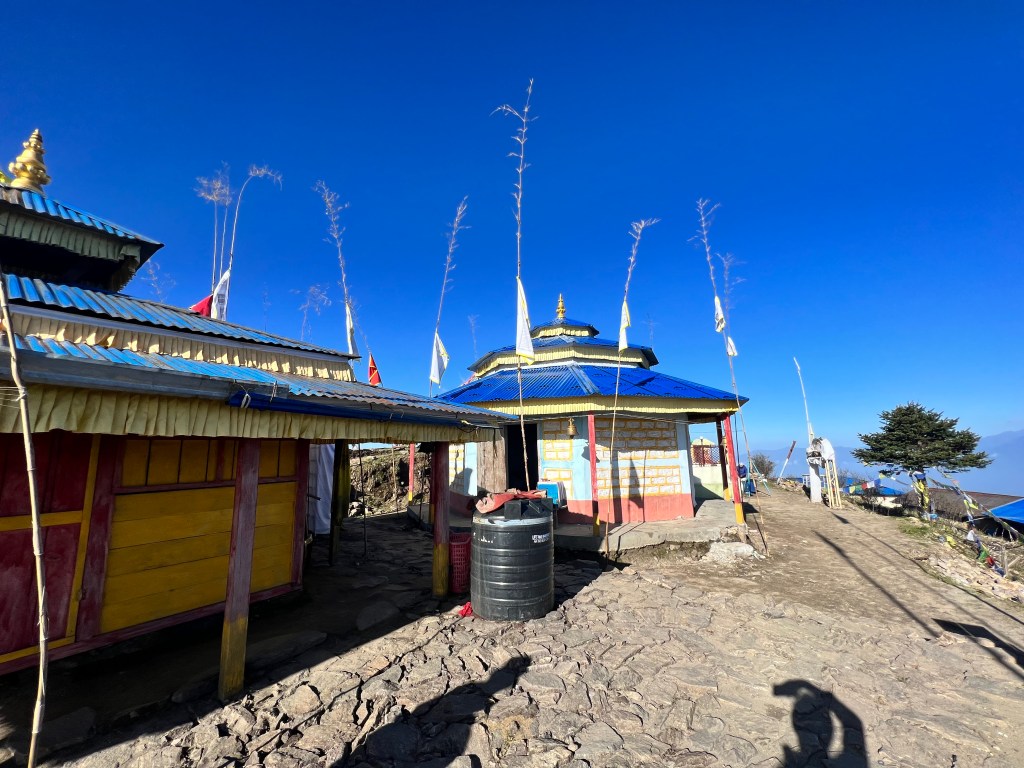This is my journey to Mukkumlung Pathibhara! Mukkumlung is a place of historical importance for the Limbu people. It is a sacred site, an ancestral land for the Limbu’s. When I asked the Limbu priest there, he mentioned that in the old times Yuma Yukmaden would rest in this land on her way between Lhasa and Kashi. Since then this has become a place of spiritual and cultural significance. I believe this is in the Mundhum, the ancient folk literature and the world view of Yakthung (Limbu) people.





The journey to Mukkumlung saw us travel all the way to Phungling, the district HQ of Taplejung. From there were took another vehicle up to Kafle Pati, the last point of road access. Its common for people to spend the night at Thulo Phedi and then start their uphill walk to Mukkumlung Pathibhara early in the morning. We actually decided to spend the night at Kafle Pati and only start the walk the next morning. We set off around 3.45am in the dark and I also saw a shooting star – first time ever! It felt surreal but I also thought, damn, 31 years of living and I’ve only seen a shooting star now?


It took us about 3 hours 30 minutes to reach the top. Do take breaks and enjoy the view as you go up! We were lucky to see mountains and the pahads (hills) that surrounded us.
Today, Pathibhara Devi Temple, established at the top alongside the Limbu temple has become an important pilgrimage destination for Hindu devotees. The growth of Hindu religion and culture has resulted in the area being known simply by Pathibhara. Donations from devotees that come from near and far has helped the Mukkumlung Pathibhara darshan area with better facilities and improved walkways over the years.
The area continues to be a place that needs further research and awareness in order to avoid the loss of history by a dominant religion and culture. Scholars and experts with a focus on Limbu, Kirati heritage continue to unearth knowledge that is helping people understand the rich heritage of the land.
Similarly, there has been a pushback on the plans to construct Pathibhara Cable Car. The pushback comes from a coalition of groups and all for different reasons, from environment/land use and protection, naming of the cable car Mukkumlung vs Pathibhara and groups that simply believe that a cable car is not necessary for the area.




Personally, I enjoyed the trek up from Kafle Pati to Mukkumlung Pathibhara. Seeing signboards that had “Welcome to Mukkumlung” was great. Unfortunately, there just was not enough historical information regarding what is Mukkumlung; why it is Mukkumlung. Today, majority (Limbu people included) go there to worship Pathibhara Devi mata and unless we are curious or question, we will continue this ongoing process of assimilation and agreeing to the dominant religion, culture, language and customs. We can follow who we want, it is in our right but it is equally important to recognise history and ensure there’s space for stories of indigenous peoples way of life, customs and culture.
It is good to see the struggle committee’s not backing down against wealthy corporations and well networked-individuals. I am a believer that history and the present can work together, that we can meet in the middle so we create space for the demands of Limbu people, the Taplejung Phungling community’ and also find ways to ensure that Mukkumlung Pathibhara becomes an accessible destination for those that want to make the pilgrimage.
Seeing examples of Mt Snowdon in Wales (UK) going back to its historic Welsh name Yr Wyddfa is an example that it is very much possible.








